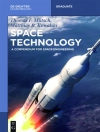The highly successful Hubble Space Telescope was meant to change our view and understanding of the universe. Within weeks of its launch in 1990, however, the space community was shocked to find out that the primary mirror of the telescope was flawed. It was only the skills of scientists and engineers on the ground and the daring talents of astronauts sent to service the telescope in December 1993 that saved the mission.
For over two decades NASA had developed the capabilities to service a payload in orbit. This involved numerous studies and the creation of a ground-based infrastructure to support the challenging missions. Unique tools and EVA hardware supported the skills developed in crew training that then enabled astronauts to complete a demanding series of spacewalks.
Drawing upon first hand interviews with those closely involved in the project over thirty years ago this story explains the development of the servicing mission concept and the hurdles that had to be overcome to not only launch the telescope but also to mount the first servicing mission – a mission that restored the telescope to full working order three years after its launch, saved the reputation of NASA, and truly opened a new age in understanding of our place in space.
This is not just a tale of space age technology, astronauts and astronomy. It is also a story of an audacious scientific vision, and the human ingenuity and determination to overcome all obstacles to make it possible. Hubble Space Telescope: From Concept to Success is a story of an international partnership, dedicated teamwork and a perfect blend of human and robotic space operations that will inspire people of all ages. The subsequent servicing missions that enabled the telescope to continue its scientific program beyond its 25th year in orbit are described in a companion volume Enhancing Hubble’s Vision: Servicing a National Treasure.
Inhaltsverzeichnis
Part I: Birth of a Telescope.- Development of a telescope.- Man-tended Hardware.- Nuts and bolts – systems and support.- Servicing satellites – tools of the trade.- Troubled times.- Part II: Deployment and Recovery.- Funding the plans and program.- Simulating the servicing.- STS-31 – The deployment mission.- STS-61 – Service Mission 1 – back on track.- Part III: Upgrades.- Planning new science.- STS-82 – Service Mission 2 – return to an old friend.- STS-103 – Service Mission 3A – a mission split in two.- STS-109 – Service Mission 3B – the other half.- Part IV: Lost Dreams and a New Hope.- A fourth mission in doubt?.- STS-125 – Service Mission 4 – a final farewell.- The twilight years and beyond.- NASA at its best.
Über den Autor
Having followed spaceflight activities since 1968, David Shayler has a broad range of experience covering all aspects of human spaceflight history. In October 1982, he created Astro Info Service to focus on his space writing and research, with lectures and educational outreach activities. Early publications included the periodicals ‘Orbiter’ on the shuttle and ‘Zenit’ on Soviet activities and a growing range of biographies on the world’s space explorers. In 1990 David co-created the Midland Spaceflight Society and acted as its chairman. His first book was published in 1987 and since then he has authored over 20 titles, including 13 titles in the Praxis Space Library between 2000 and 2009. He has contributed to titles on human spaceflight, including the three editions of “Who’s Who in Space” (Mac Millan, 1998). Personal research has been conducted at NASA JSC in Houston, and at KSC in Florida, as well as at Rice and Clear Lake Universities and NARA archives in Texas. His research continues daily and new titles are under various stages of production, some of which are available via the AIS website.












